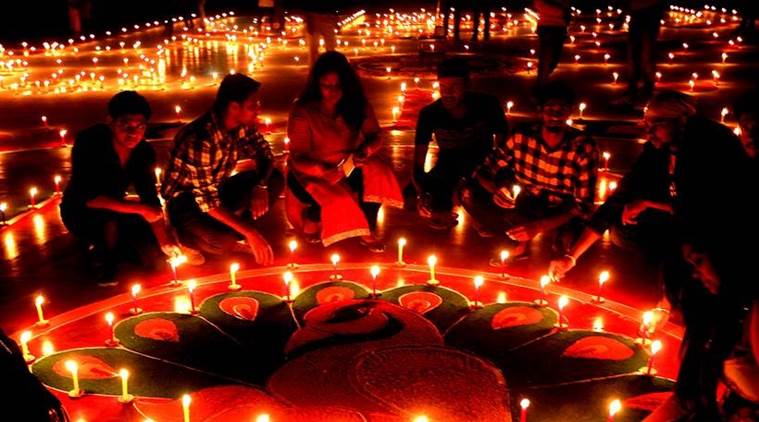Diwali 2018: Vrat Vidhi, Katha, Story, Procedure
Diwali 2018 (Deepavali 2018) Laxmi Puja Vidhi, Muhurat, Time, Samagri, Mantra: It is believed that the time after sunset, also known as Pradosh, is the most auspicious time to do Diwali Puja.
 Diwali 2018 Laxmi Puja Vidhi, Muhurat, Time, Samagri, Mantra: This year Diwali falls on November 7. (Express photo by Vishal Srivastav)
Diwali 2018 Laxmi Puja Vidhi, Muhurat, Time, Samagri, Mantra: This year Diwali falls on November 7. (Express photo by Vishal Srivastav)
One of the most anticipated festivals, Diwali is celebrated with a lot of gusto and excitement every year. The day marks the triumph of good over evil and this year. This year, it falls on November 7.
The five-day festival begins at the end of the cropping season and it is believed that it heralds good luck, happiness and wealth. According to Drik Panchang, on the day of the festival, people are supposed to wake up early and pay their respect to their family gods and ancestors. Since it is Amavasya day, many also perform Shradh for their ancestors. As per traditions, pujas are mostly performed after observing a day-long fast. The fast is broken in the evening after the Lakshmi Puja.
ALSO READ: Diwali 2018: History, Importance and Significance of Diwali festival in India
It is believed that the time after sunset, also known as Pradosh, is the most auspicious time to do Diwali Puja. During Diwali puja, Amavasya Tithi prevails.
ALSO READ: Diwali 2018 Date in India: When is Diwali 2018?
Other than Goddess Laxmi, Goddess Kali is also worshipped. Although mostly observed by Bengalis, it is a common practice and was introduced by the king of Navadvipa, Raja Krishnachandra, in the eighteenth century. Kali puja is performed at several Bengali households and with a lot of gusto. In Kali puja, the prasad offered to the goddess is non-vegetarian, a departure from the common practice.



- 01
- 02
- 03
- 04
- 05




























